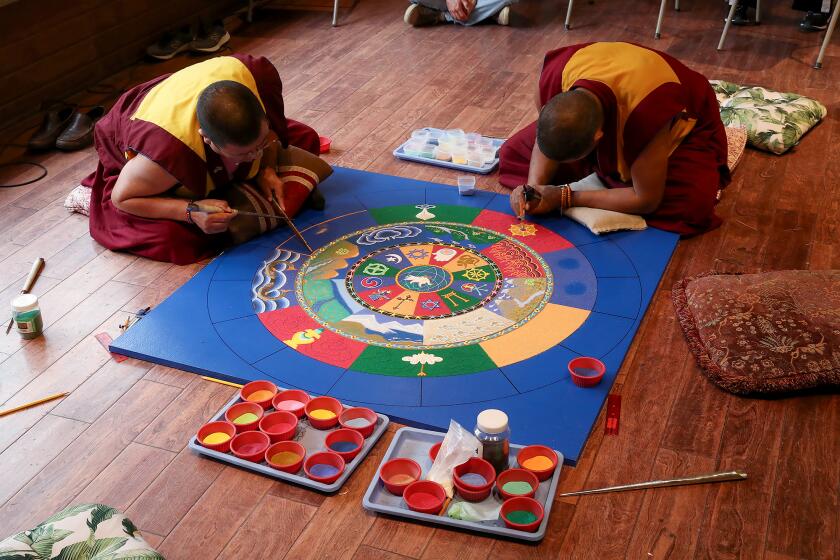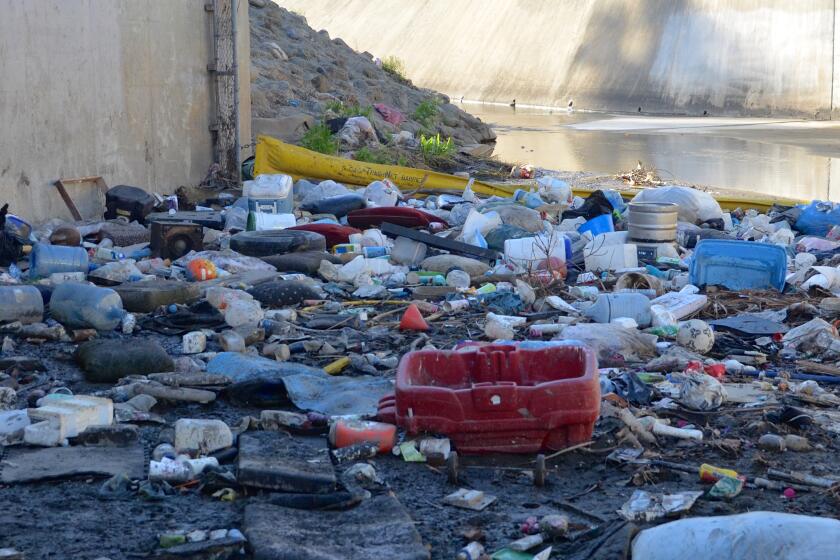Groups talk church’s demolition, salvation
The old church building looks forlorn at Warner Avenue and Nichols Street, its windows boarded up and the sign that juts over the sidewalk mostly smashed.
From a distance, the structure doesn’t give many indications of the role it once played in Orange County. Another sign, apparently hand-painted, advertises Bible study and services in English and Spanish. The building’s most prominent feature is a mural featuring a silhouette of Christ with a rainbow cutting through it and the slogan, “Jesus Lives.”
Near the front door, though, a small cornerstone bears the words “Japanese Presbyterian Church A.D. 1934.” And that’s the history that some in Orange County hope to save.
The former Wintersburg Japanese Presbyterian Church, which resides on a 3.7-acre property along with a historic house, mission and minister’s quarters, has belonged to Rainbow Disposal since 2004. The Huntington Beach trash collection company seeks to demolish all the structures.
According to the Orange County Historical Society, the buildings, some more than a century old, represent the most important Asian American extant site in the county.
The demolition may not happen anytime soon, as Rainbow is working its way through city bureaucracy in hopes of getting approval to rezone the property. In the meantime, the society is urging residents to help preserve as much of the site as possible — even if that means lifting the buildings from their foundations and relocating them elsewhere.
*
Up for preservation
Rainbow, whose main facility is across the street from the former church, bought the property from the Furuta family, its longtime owners, as a “defensive mechanism” to keep residential development out, Chairman Ron Shenkman said.
The company is seeking to have the property rezoned from residential to commercial/industrial use. Shenkman and Chief Operating Officer Jerry Moffatt said they are not sure yet how they want to develop the parcel, but believe it is not appropriate for residential homes, due to the industrial activity nearby.
The demolition, if it happens, could be a ways in the future. Rainbow has applied for an environmental impact report, which analyzes the effects construction would have on the surrounding area, and the report may take until early next year to complete, according to Associate Planner Ricky Ramos.
In the meantime, Shenkman and Moffatt said, they will support any efforts to remove the buildings for preservation.
When Rainbow took over the property, the structures had suffered from years of vandalism and break-ins, Moffatt said. One of the company’s first initiatives was to restore them as much as possible.
“We went in the church and actually took out the graffiti,” Moffatt said.
The Furuta family did not return a call Thursday seeking comment.
*
‘Where we come from’
The Wintersburg Japanese Presbyterian Church played a part in Huntington Beach’s history before the city incorporated.
According to the church’s website, it was founded in 1902 by members of local Presbyterian and Methodist churches to serve young Japanese men who worked in the celery fields. The community, known then as Wintersburg, was among several that joined Huntington when the city incorporated in 1909.
County historian Phil Brigandi, who spoke Thursday night at a historical society panel discussion, said the church expanded as the local Japanese community grew, building a mission circa 1910 and a larger facility in 1934.
The church, though, provided more to its followers than just the gospel.
Carla Tengan, a former associate curator at the Japanese American National Museum who spoke on the panel, said the church served as a beacon of support for the county’s Japanese residents, many of whom were moved to relocation camps during World War II and had trouble finding work and housing when they returned.
“The church seems to be, in people’s recollections, the main social and religious gathering point,” Tengan said.
In 1965, the church moved to a new location in Santa Ana, where it still operates as the Westminster Presbyterian Church.
Senior Pastor Ted Esaki said he would support any efforts to preserve the old building, which some of the older members of his congregation attended years ago.
“I know that it’s of historical importance to our church,” he said. “That’s our foundation. That’s where we come from.”
The panelists Thursday agreed that it would take a community effort to preserve any of the buildings on the property. Art Hansen, a professor emeritus at Cal State Fullerton, said an ideal relocation spot might be Fountain Valley, whose first mayor, Jim Kanno, is believed to be the first Japanese American to hold that post.
Still, Brigandi said, any relocation would have to be followed by a concerted effort to maintain the property.
“It is going to come down to money,” he said.
All the latest on Orange County from Orange County.
Get our free TimesOC newsletter.
You may occasionally receive promotional content from the Daily Pilot.



